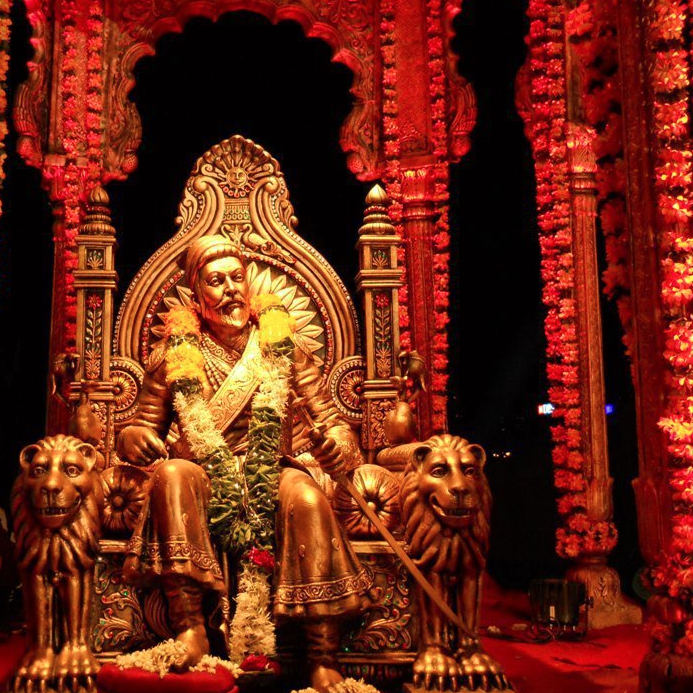இலங்கையில் வெள்ளாளர்கள் ஆதிக்கம் எப்படி வெறியாட்டம் ஆடியது என்பதை பற்றிய கட்டுரை. தமிழகத்திலும் இதையேதான் வெள்ளாளர்கள் செய்தார்கள் ஆனால் பழியை சாமர்தியமாக பிராமணன் மேல் போட்டு இன்று வரை குளிர் காய்கிறார்கள் என்பதுதான் நிதர்சனம்.
(CJ Burnside -1882 – rejected vellala “show of force and terror”) onfirmed one law, one nation by H.L.Mahindapapa 13th sept 2020.
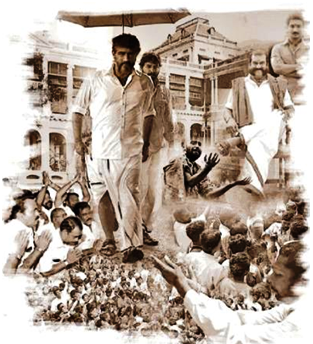
Once upon a colonial time, when the Vellalas dominated the casteist fiefdom of Jaffna, the husband of a low-caste Tamil decided to bury his wife accompanied by the ritual of beating the tom-tom. But beating the tom-tom was an exclusive privilege accorded only to the Vellalas, the highest caste. The ritual of beating the tom-tom by low-castes was taboo. It was considered to be an intrusion into the domain preserved exclusively for the Vellalas. Angered by the violation of this ritual a Vellala mob waylaid the low-caste mourners and assaulted them. The triumph of the Vellalas was in humiliating and putting the low-castes in their place.
Any challenge to the supremacy of the Vellalas was resisted fiercely and ruthlessly from the Dutch period. However, in attacking the low-caste mourners the Vellalas had crossed the line. The Police of the British Raj decided to act. They charged the Vellala Supremacists with unlawful assembly. The law found them guilty but the Vellalas appealed.
One of the eminent leaders of the Vellalas, Sir Ponnamblam Ramanathan, a disciple of Arumuka Navalar, the demi-god of the Vellalas, appeared on behalf of the Vellalas. He “contended in appeal that the accused (the Vellalas) had the right to act in the way they did, in view of Section 8 of Regulation No. 18 of 1806.

It was not brought to the notice of the Court that this Regulation had been repealed by Regulation 20 of 1844 (the year in which the British abolished slavery). In Queen vs. Ambalavanar, His Lordship Burnside, CJ.,. assuming that Regulation of 1806 was still in force, said: “In the present, it might be sufficient to ask what does this mean? Does it really mean that by the laws of this country one of Her Majesty’s subjects could be prevented from honouring the dead in a particular way; because some other person or body of people said they had the exclusive privilege of doing so?
But suppose it is conceded that this the law, and that the Supreme Court should be moved for a writ of injunction to prevent a woman from being carried to the grave to the sound of tom-tom, does it follow that a body of men may assemble themselves together, and by show of force and to the terror of the other subjects of the Queen enforce their own edict to that effect against the party who favoured the tom-tom. I apprehend not. I say it with diffidence in the face of the learned Counsel’s contention. I trust that none of the ancient rights of the Malabar inhabitants of Jaffna Patnam will be jeopardised.
Notwithstanding the contention and the venerable authority on which it is based, I make, bold to hold that the Malabar inhabitants of the Province of Jaffna Patnam, whoever they may be, must one and all be subject to the universal proposition of law applicable to the whole colony, that the people cannot take the law into their own hands, and seek to administer it after the fashion of Judge Lynch.” (p. 19, Tesawalamai, T. Sri Ramanathan, Lecturer in Law, The Nadaraja Press, 1965). In this brief paragraph Chief Justice Bruce Lockhart Burnside (1882) summarised succinctly how the Vellala Supremacists took the law into their hands and ruled Jaffna with an iron-fist from the womb to the tomb.
His comment on the “body of men who would assemble themselves together,(it happened on a larger scale in May 1976 at Vadukoddai) and by show of force and to the terror of the other subjects of the Queen enforce their own edict” is prophetic. He rejected the claim of the Vellalas to exclusive rights based on ‘venerable authority’ and declared that this is one nation with one law. He summed up by saying “whoever they may be, must one and all be subject to the universal proposition of law applicable to the whole colony, that the people cannot take the law into their own hands, and seek to administer it after the fashion of Judge Lynch.”.
Political peninsula
Casteism turned Jaffna into a political peninsula of the Vellalas, run by the Vellalas, for the Vellalas. Vellalaism was a religio-political force that enthroned the Vellalas as the God-given rulers of Jaffna. It was this casteist ideology of Vellala supremacy that led them incrementally into separatists. Only the Vellalas had the power and the resources to determine and direct politics of the peninsula. Vellalas first fought to retain their power and privileges with rival castes (e.g. Madapallis). Under the British rule low-level resistance came from the low-castes, as seen in this case. But, by and large, the Vellalas kept the other castes categorised as pariahs (outcasts) reduced to subhuman level.
They were denied the minimum space to live with human dignity. This was the entrenched political culture of the peninsula which even the colonial masters failed to dismantle despite the British abolishing slavery in 1844. Vellala supremacy came out of Hinduism. In classical Hinduism the Brahmins constituted the anointed high priests – the highest in the casteist hierarchy. But there was religious taboo on Brahmins crossing the seas. So when the waves of Vellalas crossed the Palk Strait, leaving the Brahmins behind, there was no one to fill the place of the high priests in the peninsula, The gap was filled by the Hindu revisionist, Arumuka Navalar, the caste fanatic who crowned the Vellalas as the God-given lords of the land to take the place of the Brahmins – the law-givers and hence the rulers of Jaffna. He fortified their supremacy with his new interpretation of Saivite Hinduism. This is the religious source of Vellalaism.
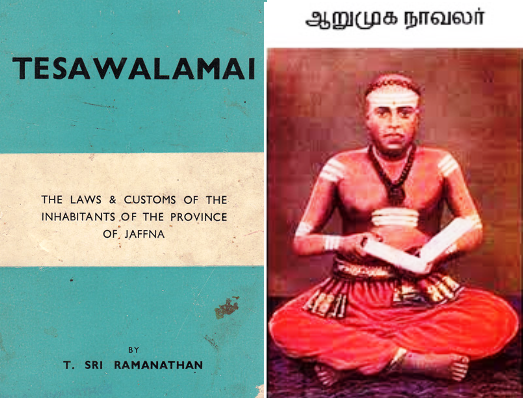
But before Arumuka Navalar sanctified and reinforced Vellalaism as a God-given commandment, the rights and the powers of the Vellalas were codified and legally enthroned by the Dutch in the Tesawalamai, the Bible of the Vellalas endorsed by 12 leading Vellala mudliyars of the time. This is the secular source of Vellalaism. The sum and substance of the Tesawalamai was to legitimise the supremacy of the Vellalas. Untrammelled ownership of slaves was handed over to the Vellalas. It was the legalised beginning of subhuman slavery in Jaffna.
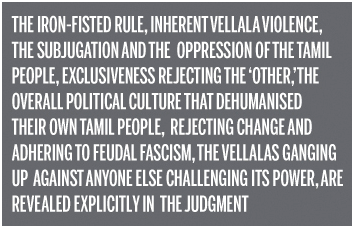
The menials to the Vellalas
For instance, the Pallas were classified as “the menials to the Vellalas. They were slaves from their origin.” The rights of the Vellala owners were defined as “(1) Right to exact service; (2) Right to control the marriage of slaves; (3) Right of appropriating children. (The child of female slave belongs to the Master).(4) Right over the slaves’ properties. (p. 16 – Ibid).
Also, “a freed person insolent could be brought to slavery again.” (p.16 – Ibid.) The best piece of Tamil literature that came out of sterile peninsular culture, Kanal, dramatised graphically the suffering and the exploitation of the low-castes by the ruthless Vellalas. This is a thumb-nail sketch of the subhuman history of Vellalaism. Its tyrannical abuse of power became an inviolable code to maintain the supremacy of the Vellalas. The Vellala determination to impose its casteist will is exposed in the judgment of Burnside CJ. Some of the main characteristics of the Vellalas are contained in the judgment.
The iron-fisted rule, inherent Vellala violence, the subjugation and the oppression of the Tamil people, exclusiveness rejecting the ‘other,’the overall political culture that dehumanised their own Tamil people, rejecting change and adhering to feudal fascism, the Vellalas ganging up against anyone else challenging its power, are revealed explicitly in the judgment.
The Vellala determination to be the unchallenged lord and master of Jaffna, excluding the ‘other’ (even if they are Tamils) has been demonstrated in Burnside’s judgment. Clearly, it is not ‘Tamilness,’ nor the greatness of Tamils and their culture, nor the concept of a ‘Tamil nation’ that made the Tamils into what they are today. It is Vellalaism that morphed into ‘Tamilness.’ It is the Vellala oppressors and persecutors of the non-Vellala Tamil people who are posing today in verti as ‘Tamil nationalists.’ By definition, the Tamils included all the Tamil-speaking people of Jaffna.
Communalism in Jaffna
But the non-Vellalas were not admitted into the Vellala-dominated Jaffna society. The non-Vellalas were pariahs, the outcasts, who were not quality Tamils. The Vellalas who were in a commanding position to define and determine the political agenda, controlled events to feather their own nest. Jane Russell, in her penetrating study of communalism under the Donoughmore Constitution ( 1931 – 1947), documents how the Vellalas manipulated the system to keep the non-Vellalas out of the power elite.
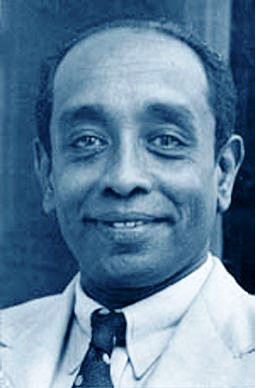
The rise of G. G. Ponnambalam represents the radical towards communalism in Jaffna. He combined in his person the two most virulent forces : communalism and casteism. Both went hand in hand to shape the future of Jaffna politics. Ponnambalam’s virulent communal campaign laid the foundations for subsequent communal conflagration. He was no Tamil nationalist.
He was a rabid, casteist communalist – and both went together in Jaffna. It was his campaign that snuffed out the idealistic Youth Congress, a formidable force in the late twenties dedicated to combat communalism and casteism. The Gandhian Movement could not stand up to the overwhelming force of casteist communalism ignited by Ponnambalam.
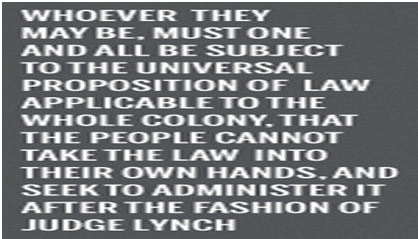
Vellalaism and Ponnambalist communalism were inseparable. In fact, when the Tamils talk of ‘homeland’, or ‘the heartland’ they mean the haven of the Vellalas and not the Tamils. To the Tamils outside the Vellala circles Jaffna was a hell-hole created by the Vellalas. Though the Tamils boast about their ‘Tamilness’ the Jaffnaites were not even recognised as Tamils by the Dutch and British administrators. As documented in Burnside’s judgement, the word Tamil was not even used to describe the Jaffnaites by the colonial masters.
They were referred to as ‘Malabaris’ because they were recruited as cheap labour from Malabar. Chief Justice Burnisde’s reference is precise: “the Malabar inhabitants of the Province of Jaffna Patnam”. There is no reference to the Tamils at all.
Sri Lankan Tamils did not exist in the eyes of the world. Not until Sir. Ponnambalam Arunachalam named them in the first census conducted in 1901. The Vellalas embraced ‘Tamilness’ and ‘Tamil nationalism’ only when they found that Vellaism had passed its use-by-date to win power in competitive electoral politics. Arumuka Navalar’s Vellala casteism had lost its divine status in the 20th century. It was no longer marketable as a political force to survive in post-Donoughmore politics.
Tamil nationalism was the last refuge of Vellala exploiters of the Tamil people. Nationalism replaced casteism. Twentieth century did not recognise casteism as a viable political force. If the grandson of G. G. Ponnambalam dares to look back objectively he will realise that his grandfather never talked of two nations. The idea of Tamils as a separate nation, like the Muslims of India, was not in his political vocabulary. That came later with his junior, S. J. V. Chelvanayakam.
The truth is that Ponnambalam condemned any separateness. He, in fact, declared that federalism is bad for Ceylon and worse for the Tamils. So, when the grandson talks of two nations he is in reality mocking his grandfather. Besides, he is refusing blindly to accept the reality facing him. He cannot get a separate state without the consent of the international community.
Erik Solheim, the peace-maker, made it categorically clear that no nation in the world was willing to recognise the two-nation theory. He should know because he dealt with international actors who were vital for the survival of Prabhakaran, the low-caste hero of the high caste Vellalas. Besides, the claim of a Tamil homeland has been debunked comprehensively by two eminent scholars: Prof. K.M.de Silva and Prof. G. H. Peiris. In their masterpieces they have provided irrefutable evidence to reject the homeland theory. The Tamil ideologues, on the contrary, are striving laboriously to construct theories that would be politically useful for separatism.
Vadukoddai Resolution
The officially accepted theory for Eelam was presented in the Vadukoddai Resolution which contains concoctions and distortions to claim that they were makers of history from the dawn of time. But Prof. K. Indrapala, the first Professor of history of the Jaffna University, wrote in his doctoral thesis that the Tamils established their first settlements only around the 10th century.
This is not the authorised version of history of the Vellalas. So, he had to leave the University in a hurry. Later he recanted and constructed a new theory to fit into the political agenda of the separatists. The Tamils are still searching history to confirm their claim in politics. Finally, when the grandson contradicts his grandfather it exposes the credibility of both. Tamils have been floating in this dilemma of credibility. They do not know whether to believe the Vadukoddian history or Vadukoddian politics that led them all the way to Nandikadal.
The future of Tamils depends on coming down to earth from the homelands they build in the air and accept the reality of peaceful co-existence which is the only place available for all communities. They must accept that the place occupied by the Tamils today, despite all its imperfections, is far, far superior to the place given to the oppressed Tamils by the casteist Vellalas or fascist Prabhakaranists.

